It looks like you're using an Ad Blocker.
Please white-list or disable AboveTopSecret.com in your ad-blocking tool.
Thank you.
Some features of ATS will be disabled while you continue to use an ad-blocker.
share:
Originally posted by Rising Against
\
[atsimg]http://files.abovetopsecret.com/images/member/249afed1de6d.jpg[/atsimg]
It saids... "Atari ET Game, Greatest of All Time". Rough translation
I have been thinking about UFO symbols lately, and noticed similarity's between Japan's Utsuro Bune incident, and Jim Penniston's Rendlesham forest
sketches.
Here's a Link that discusses the incident:
www.abovetopsecret.com...
Here's a sketch of the craft (or a painting I believe)
30.media.tumblr.com...
Also someone else beat me to it,
www.youtube.com...
Here's a Link that discusses the incident:
www.abovetopsecret.com...
Here's a sketch of the craft (or a painting I believe)
30.media.tumblr.com...
Also someone else beat me to it,
www.youtube.com...
It isn't that the claim is that the UFOs are using Egyptian hieroglyphics, but that the symbols are LIKE Egyptian, in that they are pictograms. Of
course, different witnesses describe them much differently.
Here are at least some visuals for discussing:
Lazar (from his claims of working on them near Area 51)
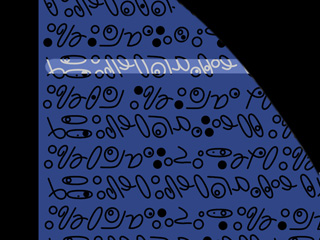
This was (he claims) what the windows of the craft looked like from the inside, (from the outside, couldn't see the window arches). Kind of a heads up display, with highlighted information.
Penniston (from Rendlesham)
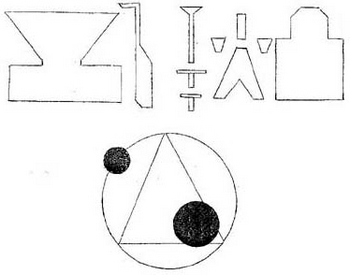
The symbols Penniston said were on the craft.
Penniston's original sketch was posted earlier in this thread, but this is the cleaned up version.
Marcel (from Roswell)
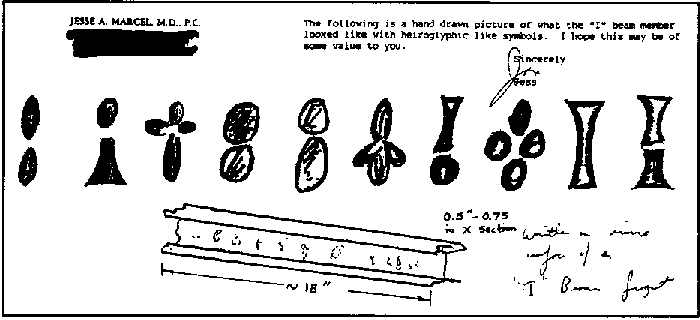
Symbols on the I-beams Jesse Marcel Jr. claims he saw, when his father helped recover the wreckage at Roswell.
Here are at least some visuals for discussing:
Lazar (from his claims of working on them near Area 51)

This was (he claims) what the windows of the craft looked like from the inside, (from the outside, couldn't see the window arches). Kind of a heads up display, with highlighted information.
Penniston (from Rendlesham)

The symbols Penniston said were on the craft.
Penniston's original sketch was posted earlier in this thread, but this is the cleaned up version.
Marcel (from Roswell)

Symbols on the I-beams Jesse Marcel Jr. claims he saw, when his father helped recover the wreckage at Roswell.
reply to post by Jdawg9909
Why the similarities? You would think that if two species advanced so far apart in the universe, that our symbology would be "alien" to each other, not so similar in appearance.
Try to think of evolution as nature's logic. I can only work on the limited knowledge I have here but it seems to me that the optimum way for individuals to exist is upright on two legs with thumbs etc etc... If this species lived on a planet that orbits a star (which it seems reasonable to assume cause we do) then there's no reason they wouldn't evolve in a similar fashion to us.
With regard to languages there are two main things to consider IMO,
1) The theory about aliens being involved in our ancient history is true hence the similarity between glyphs and their language.
2) Simple logic meant that the language evolved in a similar way to the ancients purely because it's simple and it works.
I don't know for sure but hey...We can speculate and it's fun to do so
reply to post by Titor86
I would think that as different beings encountered one another, they'd eventually settle on some kind of common language.
Look at Earth as an example. Many different languages, but the international language of business is English. Like us, I'd have to think they'd develop a common language for trade or even just interplanetary relations.
I would think that as different beings encountered one another, they'd eventually settle on some kind of common language.
Look at Earth as an example. Many different languages, but the international language of business is English. Like us, I'd have to think they'd develop a common language for trade or even just interplanetary relations.
[atsimg]http://files.abovetopsecret.com/images/member/852be45b698f.jpg[/atsimg]
This one always got to me...
Anyways, I think that we need to take the whole UFO thing step by step. No one will make any progress on these alleged symbols because we don't even know if the craft they're allegedly on actually exist. I'm not trying to be a naysayer here, I just don't find any credibility in scribbles, or descriptions of these images, because there's no way to verify these people are telling the truth about the UFO, let alone the symbols that might have been on it.
So to me, all effort in this direction will be wasted effort. It's fun to speculate about, sure. But in the way of truth, none is going to be found unless we cover the prerequisites first.
This one always got to me...
Anyways, I think that we need to take the whole UFO thing step by step. No one will make any progress on these alleged symbols because we don't even know if the craft they're allegedly on actually exist. I'm not trying to be a naysayer here, I just don't find any credibility in scribbles, or descriptions of these images, because there's no way to verify these people are telling the truth about the UFO, let alone the symbols that might have been on it.
So to me, all effort in this direction will be wasted effort. It's fun to speculate about, sure. But in the way of truth, none is going to be found unless we cover the prerequisites first.
Dont forget the Kecksburg Pensylvania. acorn UFO also with symbols:
www.roadsideamerica.com...
It is exactly the cases with symbols that changes the whole idea of UFOs being just military, besides the strange motion of course.
www.roadsideamerica.com...
It is exactly the cases with symbols that changes the whole idea of UFOs being just military, besides the strange motion of course.
reply to post by GringoViejo
The three I mentioned all have a LOT more to go on than just a scribble on a piece of paper.
1) While Lazar's story is controversial, nevertheless, he:
has been able to give descriptions of the base that nobody could know without being there (as confirmed by others)
has been able to demonstrate knowledge of testing dates/times for unexplained lights at the base
has been able to furnish a W-2 showing that he was paid by the government
currently operates a chemical supply company that has government contracts
2) The Rendlesham case has numerous military witnesses and has been investigated by both the Air Force and the Ministry of Defence. It is one of the most well documented UFO cases to date.
3) Roswell is of course, infamous. First on the front page of the local paper, stating the Army recovered a flying disc, from the base's own announcements! Numerous witnesses handled the beams and witnessed the markings, even a high-ranking general who gave sworn testimony to it.
No, these have FAR more evidence than just some random scribbles...
For more info on these, check the best cases thread, or simply search here on ATS.
The three I mentioned all have a LOT more to go on than just a scribble on a piece of paper.
1) While Lazar's story is controversial, nevertheless, he:
has been able to give descriptions of the base that nobody could know without being there (as confirmed by others)
has been able to demonstrate knowledge of testing dates/times for unexplained lights at the base
has been able to furnish a W-2 showing that he was paid by the government
currently operates a chemical supply company that has government contracts
2) The Rendlesham case has numerous military witnesses and has been investigated by both the Air Force and the Ministry of Defence. It is one of the most well documented UFO cases to date.
3) Roswell is of course, infamous. First on the front page of the local paper, stating the Army recovered a flying disc, from the base's own announcements! Numerous witnesses handled the beams and witnessed the markings, even a high-ranking general who gave sworn testimony to it.
No, these have FAR more evidence than just some random scribbles...
For more info on these, check the best cases thread, or simply search here on ATS.
Here are two examples of alleged alien script. Not on a ship but they may be useful for comparison.
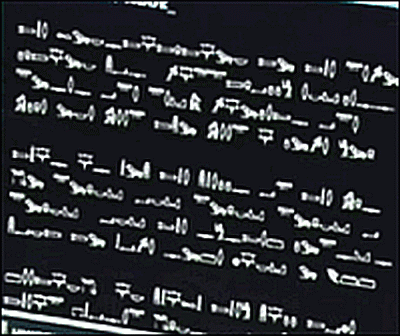
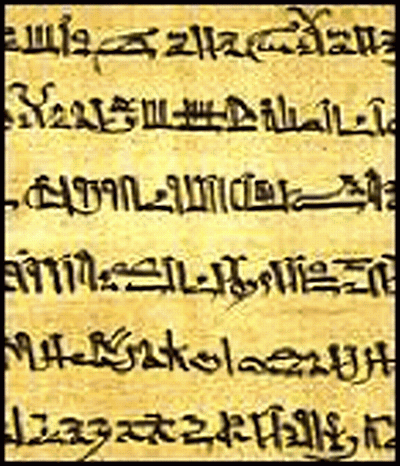
thetruthaboutpyramids.com...


thetruthaboutpyramids.com...
these ones confound me! what i'd love to learn from being able to read their languages!!
here's a link to the craft and it's occupants that the OP mentions in his first post.
www.viewzone.com...
Originally posted by ladyteeny
these ones confound me! what i'd love to learn from being able to read their languages!!
here's a link to the craft and it's occupants that the OP mentions in his first post.
www.viewzone.com...
That backwords object sticking out looks kinda like this famous pic (viewzone link). It is what people call a submarine. But is it a remnant of a moon flying ufo that was dumped.
vejprty.com...
I just watched the episode of UFO Hunters season 3 about Nazi UFOs. The bell-shaped 'Wunderwaffe' I think I saw symbols on this nazi object. Then
the Kecksburg incident shows quite similar symbols and object in a time when Nazi moved to the US. What really surprised me is, what was the purpose
of drawing such symbols?
Then it is not secret that some Nazi scientists moved to the US or were invited to work for them, which started the jump of technology in the US, nuclear fission and bomb, rocketry and space travel.
One of the conclusions made was obviously some of these UFOs are man-made. I find it stunning becaus I've always considered the symbols on a ship to be the perfect proof of not human.
This only shows humanity possesses such technology and forget some silly debunkers claiming Rendlesham was a lighthouse reflection or other bad explanation. It did happen, but opposite to what one could say - could be human too? Afterall symbols now can be man made too..
Then it is not secret that some Nazi scientists moved to the US or were invited to work for them, which started the jump of technology in the US, nuclear fission and bomb, rocketry and space travel.
One of the conclusions made was obviously some of these UFOs are man-made. I find it stunning becaus I've always considered the symbols on a ship to be the perfect proof of not human.
This only shows humanity possesses such technology and forget some silly debunkers claiming Rendlesham was a lighthouse reflection or other bad explanation. It did happen, but opposite to what one could say - could be human too? Afterall symbols now can be man made too..
reply to post by The GUT
Thanks, The Gut -
For that link to Alien Writings. New to me and right up my alley - Cheers - Nexo
Thanks, The Gut -
For that link to Alien Writings. New to me and right up my alley - Cheers - Nexo
Originally posted by thetiler
Originally posted by ladyteeny
these ones confound me! what i'd love to learn from being able to read their languages!!
here's a link to the craft and it's occupants that the OP mentions in his first post.
www.viewzone.com...
That backwords object sticking out looks kinda like this famous pic (viewzone link). It is what people call a submarine. But is it a remnant of a moon flying ufo that was dumped.
vejprty.com...
that's exactly what i said in my first post on ats! i think they share a remarkable similarity myself!
reply to post by Signals
en.wikipedia.org...
In season 1 Episodes 1 and 2, they give a few theories about how aliens helped shape human society by interacting with our ancestors. Pretty interesting -- not sure if I agree, but not a bad series.
en.wikipedia.org...
In season 1 Episodes 1 and 2, they give a few theories about how aliens helped shape human society by interacting with our ancestors. Pretty interesting -- not sure if I agree, but not a bad series.
reply to post by Imtor
So, your supposition is that we've had flying disc technology since the 1940's, and yet now, over 70 years later, we still haven't seen ANY application of this in the private sector or the known military? That's just absurd. No way would the military just SIT on such an advancement, we'd have fleets of discs by now. Also, the tech would have made it into the private sector within 15 years of such an advance.
So, your supposition is that we've had flying disc technology since the 1940's, and yet now, over 70 years later, we still haven't seen ANY application of this in the private sector or the known military? That's just absurd. No way would the military just SIT on such an advancement, we'd have fleets of discs by now. Also, the tech would have made it into the private sector within 15 years of such an advance.
Let start comparing with all the different sources of pictures, this one was a big deal, Father Crespi's the mysterious part of his collection,
supposedly recovered from an underground cave that had something to do with aliens.
www.abovetopsecret.com...

www.abovetopsecret.com...

Originally posted by hrmmm
Im haveing similar thaughts about these markings. Why would ufo's have markings?
They would not need identifiers on craft as humans do on aircraft. Think about it a little.
If you're an alien pilot and you go out to the hangar and there are 20 identical spaceships, how do you know which is yours? Markings can serve many different purposes, they can be used for advertising, they can be used to denote allegiance (faction, country, planet, etc.), they can be used to identify things like access hatches, emergency handles and fuel ports, and they can be used to identify your vehicle when it's mixed in with many similar vehicles whether on the ground or in the air. We have transponders on most aircraft these days, but we still use visual identification as well. If you run across a crash site that's decades old, a transponder is going to be long dead but the "N" number will identify the craft long after that. It doesn't seem far-fetched to imagine aliens would do the same for similar reasons.
As long as we're talking about alien language/ symbols, we need to throw in the drone stories which led to the mysterious "Isaac" and his postings
about the CARET program:
isaaccaret.fortunecity.com...
Here's one of the more interesting blurbs regarding the alien "language":
Whether CARET is real or a hoax, the description of the language is fascinating from the standpoint that even if this is bogus, there could be some elements of truth in it. Alien symbols may represent much more than just a language.
There's also the Kera encounter which as far as I know has never been debunked. It's a fascinating story of some boys and their encounter with some kind of small robotic drone. Pictures of the drone show some simplistic but intriguing pictograms:
Source
isaaccaret.fortunecity.com...
Here's one of the more interesting blurbs regarding the alien "language":
So back to the language. The language is actually a "functional blueprint". The forms of the shapes, symbols and arrangements thereof is itself functional. What makes it all especially difficult to grasp is that every element of each "diagram" is dependant on and related to every other element, which means no single detail can be created, removed or modified independently. Humans like written language because each element of the language can be understood on its own, and from this, complex expressions can be built. However, their "language" is entirely context-sensitive, which means that a given symbol could mean as little as a 1-bit flag in one context, or, quite literally, contain the entire human genome or a galaxy star map in another. The ability for a single, small symbol to contain, not just represent, tremendous amounts of data is another counter-intuitive aspect of this concept. We quickly realized that even working in groups of 10 or more on the simplest of diagrams, we found it virtually impossible to get anything done. As each new feature was added, the complexity of the diagram exponentially grew to unmanageable proportions. For this reason we began to develop computer-based systems to manage these details and achieved some success, although again we found that a threshold was quickly reached beyond which even the supercomputers of the day were unable to keep up. Word was that the extra-terrestrials could design these diagrams as quickly and easily as a human programmer could write a Fortran program. It's humbling to think that even a network of supercomputers wasn't able to duplicate what they could do in their own heads. Our entire system of language is based on the idea of assigning meaning to symbols. Their technology, however, somehow merges the symbol and the meaning, so a subjective audience is not needed. You can put whatever meaning you want on the symbols, but their behavior and functionality will not change, any more than a transistor will function differently if you give it another name.
Whether CARET is real or a hoax, the description of the language is fascinating from the standpoint that even if this is bogus, there could be some elements of truth in it. Alien symbols may represent much more than just a language.
There's also the Kera encounter which as far as I know has never been debunked. It's a fascinating story of some boys and their encounter with some kind of small robotic drone. Pictures of the drone show some simplistic but intriguing pictograms:
Source
edit on 4-10-2011 by SavedOne because: Added more info
new topics
-
My Retirement
General Chit Chat: 41 minutes ago -
‘Something horrible’: Somerset pit reveals bronze age cannibalism
Ancient & Lost Civilizations: 1 hours ago -
Spiritual Solstice
Short Stories: 3 hours ago
top topics
-
'Mass Casualty event' - Attack at Christmas market in Germany
Mainstream News: 14 hours ago, 26 flags -
Search to Resume for MH 370
Disaster Conspiracies: 16 hours ago, 5 flags -
Sue Gray, Sir Keir Starmer's former Chief of Staff, Nominated for Peerage
Regional Politics: 17 hours ago, 3 flags -
My Retirement
General Chit Chat: 41 minutes ago, 3 flags -
‘Something horrible’: Somerset pit reveals bronze age cannibalism
Ancient & Lost Civilizations: 1 hours ago, 1 flags -
Spiritual Solstice
Short Stories: 3 hours ago, 0 flags
active topics
-
My Retirement
General Chit Chat • 2 • : billxam1 -
The Truth Behind the Manchester Airport "Police Assault" Video
Social Issues and Civil Unrest • 57 • : gortex -
Biden Nationalizes Another 50,000+ Student Loans as He Heads for the Exit
US Political Madness • 14 • : butcherguy -
'Mass Casualty event' - Attack at Christmas market in Germany
Mainstream News • 107 • : cherokeetroy -
‘Something horrible’: Somerset pit reveals bronze age cannibalism
Ancient & Lost Civilizations • 1 • : Naftalin -
Sue Gray, Sir Keir Starmer's former Chief of Staff, Nominated for Peerage
Regional Politics • 3 • : Freeborn -
Search to Resume for MH 370
Disaster Conspiracies • 8 • : charlyv -
Spiritual Solstice
Short Stories • 2 • : Naftalin -
Mood Music Part VI
Music • 3752 • : BrucellaOrchitis -
An Interesting Conversation with ChatGPT
Science & Technology • 31 • : BrucellaOrchitis
